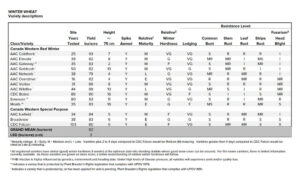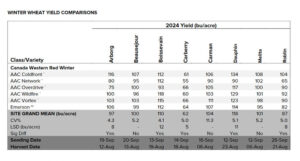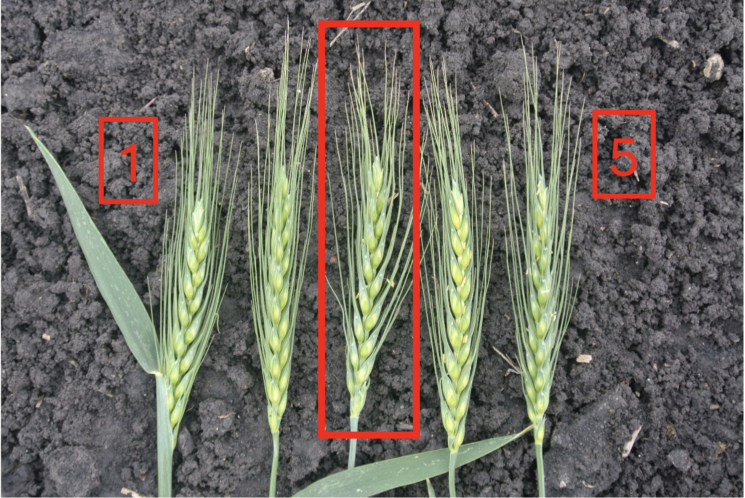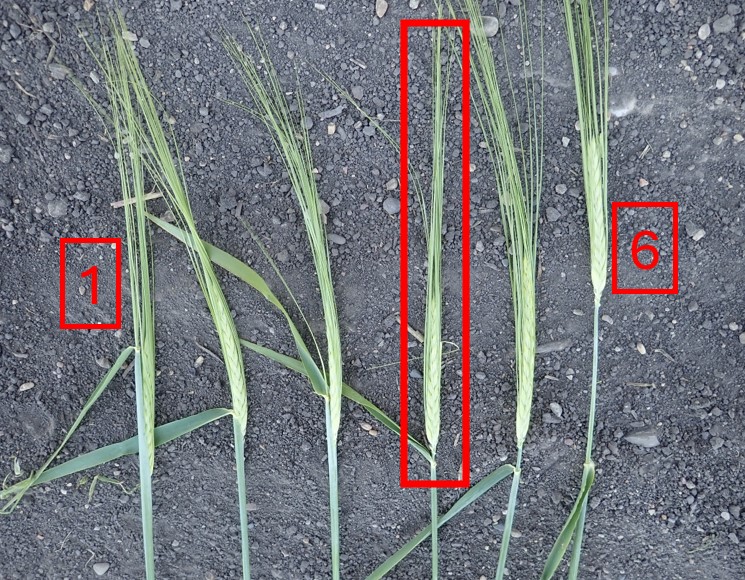Colin Hiebert, research scientist, Agriculture and Agri-Food Canada

Colin Hiebert is a research scientist at Agriculture and Agri-Food Canada’s (AAFC) Morden Research and Development Centre (RDC). He completed his undergraduate degree in biology at the University of Winnipeg, before continuing his graduate studies in plant genetics, focusing on wheat during his PhD. He now lives in Winkler, MB, with his wife and their two sons.
Where did you work before joining AAFC?
Before starting graduate school, I worked in both the public and private sectors of agriculture. After finishing my PhD, I was a postdoctoral researcher at AAFC’s Cereal Research Centre in Winnipeg (now closed) for a year before I was hired as a research scientist there. Subsequently, my program was moved to Morden.
What got you interested in this area of work?
I have always enjoyed the field of genetics, and wheat is scientifically fascinating. It is also a Prairie icon, so working on wheat connects me to western Canadian culture and the economy. Wheat is also a global crop, allowing me to interact with and impact research and agriculture internationally. The convergence of all these different factors drew me to working on wheat.
Tell us a bit about what you are working on at AAFC.
I lead a wheat genetics program, covering everything from fundamental genetics (classical genetics) to modern genomics tools. We cover quite the continuum of research, which was reflected in the previous cluster (2018-23) and in the current cluster (2023-28).
In the “Pre-breeding and development of breeding tools to diversify disease resistance in bread wheat” 20218-23 project, we focused on introducing combinations of disease resistance genes into elite genetic backgrounds that breeders can use in their programs. One challenge is when we have new or underutilized disease resistance genes, they are often in backgrounds that are not suitable for production in Western Canada. The pre-breeding work addressed this challenge.
Another challenge is that it is difficult to select resistance genes by a visual assessment, so we use DNA markers, or marker-assisted selection, to make the process more efficient and accurate. We discovered new DNA markers that made gene selection more efficient both for our projects and for breeder selection.
A positive outcome from this project was discovering a new stem rust resistance gene, Sr67, which is effective against strains of stem rust fungus including the Ug99 races discovered in Africa. There was previously a lot of research activities that went into mitigating the risk of those races. This work is still ongoing to mitigate the threats that exotic strains pose to Canadian producers.
At Morden, we have a biocontainment facility where we can evaluate plants in our genetic studies or in breeding programs against these exotic races to mitigate the risk of them coming to Canada. Sr67 is effective against present strains and can provide resistance against races that could pose a threat. The discovery was recently published here.
We have included the Sr67 gene in the current cluster project to ensure early adoption of this new gene. This is an exciting extension from the previous round of funding.
What can you say about the value of farmers providing funding and support to your organization?
All my collaborators here and at the other AAFC research centres and I are very grateful to farmers for their funding. In these types of projects, we are trying to directly address their more immediate needs. This funding allows us to translate some of our more upstream work into something that can find its way into a farmer’s field. We want our research to make a difference to producers.
How does that funding and support directly benefit farmers?
My research program focuses largely on disease resistance genes. By working closely with pathologists and breeders, we hope to create more sustainable disease resistance, which could lower input costs for farmers and protect yield potential. There are still issues that require chemical inputs, for example, but if we can get resistance to a point where the efficacy of the chemicals is better because the degree of disease protection required is not as high, that will help farmers.
I hope farmers feel welcomed and comfortable reaching out to scientists. Their insights and concerns help shape the direction of our research.
How do you spend your time outside of work?
I coach my kids’ hockey teams, and we enjoy a lot of outdoor activities like hiking, backpacking and hunting.
What is the best part of your job?
There are many aspects I enjoy. I get to tackle interesting scientific questions that impact an important sector in the Canadian economy and for Western Canada. I also get to interact with the international research community and meet people from around the world working on similar challenging research questions. I also have opportunities to interact with farmers, as I live and work in a rural community at a rural research centre. These conversations offer insights into how our research impacts their operations and livelihoods.
How do you celebrate agriculture?
My wife has done a restart on her family’s farm, and I have been able to participate in that. This was the second year of the farm’s restart, and it has been both enjoyable and a great way for us to celebrate agriculture.









 By Jonothan Hodson
By Jonothan Hodson




